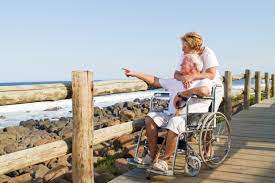Travel Group Creates Guidelines for Inclusive, Accessible Travel

By Rasheeda Childress: Reprint from Associations Now
To ensure that travelers with disabilities can have good experiences when they take trips, the World Travel & Tourism Council created a guide to help its members ensure their practices and policies are inclusive and accessible.
While the pandemic curtailed travel last year, the travel and tourism industry is starting to see signs of recovery as vaccinations increase and people feel safe hitting the road again. Looking to make the sector a more welcoming as it begins reopening, the World Travel & Tourism Council recently created new guidelines for inclusion and accessibility, which focus on the experience of travelers with disabilities.
“We feel this was a good first step in exploring the challenges and opportunities related to accessibility, while acknowledging that there is a lot more to do,” said Tiffany Misrahi, WTTC vice president of policy and research.
The report, “Inclusive and Accessible Travel Guidelines,” [PDF] focuses on four areas: developing an inclusive and accessible system, creating safe spaces, designing an engaging and relevant system, and exemplifying inclusion and accessibility. The various guidelines offer several steps businesses can take. Among the recommendations: Companies should develop accessibility features that are clear, overt, and which travelers with disabilities do not require special assistance from staff to use, as well as regularly and proactively engage travelers with disabilities in the creation of accessible products and services.
“The guidelines were designed to be both high-level and open, so they could be feasible and applicable for large businesses and [small and midsize enterprises] alike, and also for businesses across the travel and tourism sector,” Misrahi said. She thinks organizations will tailor the guidelines to fit their needs and go “one step further” to look at other guides that may be more specific to their sector.
WTTC worked on the guidelines earlier this year, with John Sage, president of Accessible Travel Solutions, taking the lead on authoring report. It was then reviewed by members and travel and disability experts. As travel picks back up post-pandemic, WTTC expects the guidelines to help its members.
“While the guidelines don’t address COVID-19 directly, they will help companies who haven’t yet engaged in this area begin to consider issues related to accessibility,” Misrahi said.
Misrahi said that while member feedback on the guidelines has been positive, WTTC really wants people to use the report as it fits within their business model.
“There isn’t a timeline for implementation, and it should also be noted that not all points within the guidelines will work for every business,” Misrahi said. “Certain organizations might take an ‘all inclusive’ approach, while others may start small and pick certain elements to start with. What is important for us is that change starts happening.”

